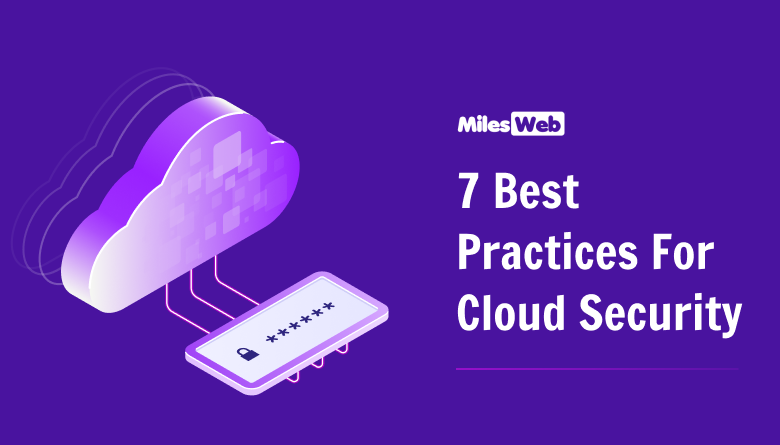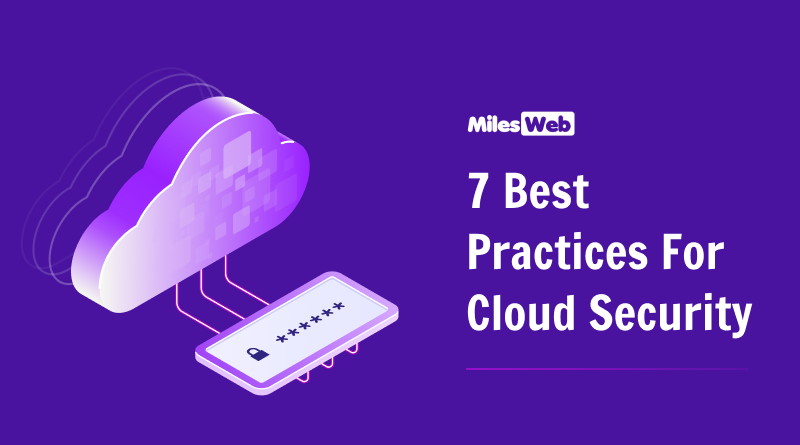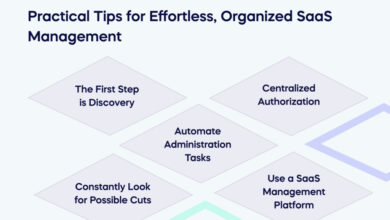
Cloud Security Right Preparation is Key
Cloud security is best achieved with the right preparation. Think of it like building a house – you wouldn’t start laying bricks without a solid blueprint, right? The same principle applies to securing your cloud infrastructure. Ignoring the planning phase can lead to costly vulnerabilities and headaches down the line. This post dives into the crucial steps you need to take to build a robust and secure cloud environment from the ground up, ensuring your data and applications are protected.
We’ll cover everything from risk assessment and mitigation strategies to implementing secure architectures and establishing a strong security culture within your organization. We’ll also explore the importance of ongoing monitoring and incident response, because let’s face it, even the best-laid plans can encounter unexpected challenges. Get ready to transform your approach to cloud security!
Defining “Right Preparation” for Cloud Security
Successfully navigating the complex landscape of cloud security requires meticulous preparation. It’s not simply about implementing tools; it’s about establishing a robust, proactive security posture that anticipates threats and minimizes vulnerabilities. This involves a multi-faceted approach encompassing planning, implementation, and ongoing monitoring. Failing to adequately prepare leaves your organization exposed to significant risks, including data breaches, financial losses, and reputational damage.
Components of Robust Cloud Security Preparation
A robust cloud security preparation strategy comprises several key components. These components work synergistically to create a comprehensive defense against cyber threats. They include a clearly defined security policy, a detailed inventory of cloud assets, a thorough risk assessment, the selection and implementation of appropriate security tools, and a comprehensive training program for employees. Each of these elements plays a crucial role in building a strong foundation for cloud security.
Ignoring any one of them significantly weakens the overall security posture.
Key Stages in a Comprehensive Preparation Strategy
A comprehensive cloud security preparation strategy unfolds in distinct stages. First, you must conduct a thorough risk assessment to identify potential vulnerabilities and threats. This assessment should consider both internal and external factors, including regulatory compliance requirements. Second, you need to design and implement appropriate security controls based on the identified risks. This might involve configuring firewalls, implementing intrusion detection systems, and enforcing strong access controls.
Third, you should regularly monitor your cloud environment for suspicious activity and potential breaches. Finally, you need to establish incident response procedures to quickly and effectively address any security incidents that do occur. This ensures minimal disruption and rapid recovery.
Step-by-Step Guide for Implementing a Proactive Cloud Security Posture
Implementing a proactive cloud security posture is an iterative process. Begin by clearly defining your organization’s security goals and objectives. This forms the basis for all subsequent decisions. Next, conduct a comprehensive inventory of your cloud assets, identifying all systems, applications, and data stored in the cloud. Then, implement appropriate security controls based on the risk assessment.
Regularly review and update your security controls to adapt to evolving threats and vulnerabilities. Finally, continuously monitor your cloud environment for suspicious activity and conduct regular security audits to ensure compliance with security policies and regulations. This cyclical process of assessment, implementation, monitoring, and adaptation is key to maintaining a strong security posture.
Essential Pre-Deployment Security Considerations
Before deploying any applications or data to the cloud, several crucial security considerations must be addressed. These considerations span various security domains and require careful planning and execution. Failure to address these points can lead to significant vulnerabilities and increased risk. A checklist approach is highly recommended to ensure all necessary steps are taken.
| Security Area | Pre-Deployment Actions | Ongoing Monitoring | Remediation Strategies |
|---|---|---|---|
| Identity and Access Management (IAM) | Implement strong password policies, multi-factor authentication (MFA), and least privilege access controls. Define clear roles and responsibilities. | Regularly review user access privileges and activity logs. Detect and respond to suspicious login attempts. | Immediately revoke compromised credentials. Implement enhanced authentication methods. Conduct security awareness training. |
| Data Security | Encrypt data both in transit and at rest. Implement data loss prevention (DLP) measures. Regularly back up data. | Monitor data access patterns and identify anomalies. Regularly scan for vulnerabilities. | Implement stronger encryption algorithms. Strengthen DLP rules. Regularly test backup and recovery procedures. |
| Network Security | Configure firewalls and intrusion detection/prevention systems (IDS/IPS). Implement virtual private networks (VPNs) for secure remote access. | Monitor network traffic for suspicious activity. Regularly update security software. | Block malicious traffic. Investigate and address security alerts. Implement advanced threat protection. |
| Vulnerability Management | Conduct regular security assessments and penetration testing. Address identified vulnerabilities promptly. | Continuously scan for vulnerabilities using automated tools. Track remediation efforts. | Prioritize and patch vulnerabilities based on severity. Implement security hardening techniques. |
Assessing and Managing Risks in the Cloud

Migrating to the cloud offers incredible advantages, but it also introduces a new landscape of security risks. Understanding and mitigating these risks is crucial for maintaining data integrity, ensuring business continuity, and complying with regulations. This section dives into the practical aspects of assessing and managing those risks effectively.
Effective cloud risk management starts with a comprehensive understanding of potential vulnerabilities and their impact. It’s not just about technology; it’s about people, processes, and the entire cloud ecosystem. A proactive approach, combining robust assessment methodologies with well-defined mitigation strategies, is essential.
Common Cloud Security Vulnerabilities and Their Impact
Cloud environments, while offering scalability and flexibility, are susceptible to various security threats. Misconfigurations, such as improperly secured storage buckets or open ports, are surprisingly common and can lead to data breaches. Lack of proper access control, allowing unauthorized users to access sensitive information, is another major concern. Insider threats, whether malicious or accidental, can also compromise security.
Furthermore, vulnerabilities in the underlying cloud infrastructure itself, or in third-party applications integrated into the cloud environment, can create significant risks. The impact of these vulnerabilities can range from minor data leaks to complete system outages, resulting in financial losses, reputational damage, and legal repercussions. For example, a misconfigured S3 bucket could expose sensitive customer data, leading to significant fines under GDPR.
Risk Assessment Methodologies for Cloud Environments
Several methodologies help organizations systematically identify and analyze cloud security risks. NIST Cybersecurity Framework, for instance, provides a comprehensive approach to managing cybersecurity risk across an organization’s entire ecosystem, including cloud environments. Another popular approach is the ISO 27005 standard, which offers a structured methodology for risk assessment and treatment. These methodologies often involve identifying assets, analyzing threats and vulnerabilities, determining the likelihood and impact of potential incidents, and assigning risk levels.
Qualitative risk assessments rely on expert judgment to estimate likelihood and impact, while quantitative assessments utilize data and statistical models for a more precise evaluation. The choice of methodology depends on the organization’s size, resources, and risk tolerance.
Prioritizing and Mitigating Identified Risks
Once risks have been identified and assessed, prioritizing them is crucial. A common approach is to use a risk matrix that considers both the likelihood and impact of each risk. Risks with high likelihood and high impact should be addressed first. Mitigation strategies vary depending on the nature of the risk. Technical controls, such as encryption, access control lists, and intrusion detection systems, are often employed.
Non-technical controls, including security awareness training, incident response plans, and robust governance policies, are equally important. For instance, a high-impact risk of data loss due to a misconfigured database might be mitigated by implementing data encryption at rest and in transit, coupled with multi-factor authentication and regular security audits.
Risk Management Frameworks for Cloud Security
Various risk management frameworks provide structure and guidance for managing cloud security risks. The NIST Cybersecurity Framework, mentioned earlier, is widely adopted for its comprehensive approach. Other frameworks include ISO 27001 (Information Security Management Systems) and COBIT (Control Objectives for Information and related Technologies). These frameworks offer a structured approach to identifying, assessing, treating, and monitoring risks, ensuring consistent and effective management.
The choice of framework depends on the organization’s specific needs and regulatory requirements. For example, organizations subject to HIPAA regulations might need to align their risk management practices with HIPAA’s specific requirements.
Designing a Risk Mitigation Plan
A comprehensive risk mitigation plan integrates technical and non-technical controls to address identified risks effectively. This plan should Artikel specific actions, responsible parties, timelines, and budgets for each mitigation activity. Regular reviews and updates are essential to adapt to evolving threats and vulnerabilities. The plan should also incorporate incident response procedures to handle security incidents efficiently and minimize their impact.
For example, a plan might include implementing multi-factor authentication for all users, encrypting sensitive data at rest and in transit, regularly patching systems, and conducting security awareness training for employees. Furthermore, it should detail processes for incident detection, containment, eradication, recovery, and post-incident activity. Regular testing and simulation exercises are vital to ensure the plan’s effectiveness.
Implementing Secure Cloud Architectures
Designing a secure cloud architecture isn’t just about ticking boxes; it’s about proactively building resilience against threats. A well-architected cloud environment minimizes vulnerabilities and ensures business continuity. This involves a multi-faceted approach encompassing design, deployment, and ongoing management.Secure cloud architectures leverage a combination of security controls, both technical and procedural, to protect data and applications. This goes beyond simply using encryption; it requires a holistic understanding of potential risks and how to mitigate them at every layer of the system.
Secure Cloud Deployment Models
Choosing the right cloud deployment model is crucial for security. The model you select impacts how you manage security, access, and compliance. Each option presents unique security considerations.Multi-cloud deployments, utilizing services from multiple cloud providers, offer resilience and redundancy. However, managing security across disparate environments requires careful orchestration and consistent security policies. A hybrid cloud, combining on-premises infrastructure with cloud services, allows for a gradual migration and can be tailored to specific security requirements.
However, this requires robust integration and management of security across both environments. A single-cloud strategy, while simpler to manage, presents a greater risk if the provider experiences an outage or security breach.
Least Privilege Access Controls
Implementing the principle of least privilege is paramount. This means granting users and applications only the minimum necessary permissions to perform their tasks. This significantly reduces the potential impact of a compromised account or application. For instance, a database administrator shouldn’t have access to the entire network, only the specific database they manage. Similarly, an application should only access the data it requires to function, preventing unauthorized data access.
This granular control is implemented through role-based access control (RBAC) and attribute-based access control (ABAC) systems, which allow for dynamic and context-aware permission management.
Data Security at Rest and in Transit
Protecting data both at rest (stored data) and in transit (data moving across a network) is vital. Data at rest should be encrypted using strong encryption algorithms, and encryption keys should be managed securely. Data in transit should be protected using HTTPS and VPNs to ensure confidentiality and integrity. Regularly auditing and monitoring data access logs are essential to detect and respond to unauthorized access attempts.
Consider implementing data loss prevention (DLP) tools to prevent sensitive data from leaving the cloud environment without authorization.
Example of a Secure Cloud Architecture
Imagine a three-tier architecture:* Presentation Tier: A web application hosted on a load-balanced cluster in a public cloud (e.g., AWS, Azure, GCP), protected by a web application firewall (WAF). This tier only handles user interface interactions and requests.
Application Tier
Microservices deployed in containers on a Kubernetes cluster in a private cloud or a virtual private cloud (VPC). These services communicate securely via internal APIs using mutual TLS authentication.
Data Tier
Solid cloud security starts with planning; you wouldn’t build a house without blueprints, right? The same applies to your apps. Thinking about application development, check out this insightful article on domino app dev the low code and pro code future to see how development choices impact your security posture. Ultimately, proactive security measures, implemented from the design phase, are crucial for a robust and secure cloud environment.
A database hosted in a managed database service (e.g., RDS, Cosmos DB) within the same VPC. Data is encrypted at rest and in transit. Access is controlled through RBAC and network segmentation.All communication between tiers is encrypted. A centralized security information and event management (SIEM) system monitors all activity, providing real-time threat detection and alerting.
Regular penetration testing and vulnerability assessments are performed to identify and address weaknesses. This layered approach, combined with robust access controls and monitoring, provides a solid foundation for a secure cloud architecture.
Data Security and Compliance in the Cloud
Protecting your data in the cloud isn’t just about keeping hackers out; it’s about ensuring your organization meets legal and regulatory obligations while maintaining the confidentiality, integrity, and availability of your sensitive information. This involves a multifaceted approach encompassing robust security measures, strict adherence to compliance standards, and a proactive risk management strategy.Data security in the cloud necessitates a layered approach.
We’ll explore strategies to safeguard data confidentiality, integrity, and availability, delve into the specifics of Data Loss Prevention (DLP) implementation, and examine crucial compliance requirements like GDPR and HIPAA. Finally, we’ll Artikel methods for achieving compliance with industry-specific regulations, providing a practical framework for maintaining secure and compliant cloud operations.
Data Confidentiality, Integrity, and Availability
Ensuring data confidentiality, integrity, and availability (CIA triad) is paramount in cloud security. Confidentiality protects data from unauthorized access, integrity ensures data accuracy and reliability, and availability guarantees data accessibility when needed. Strategies include robust access control mechanisms (e.g., role-based access control or RBAC, multi-factor authentication or MFA), data encryption both in transit and at rest, regular data backups and disaster recovery planning, and rigorous monitoring for anomalies.
For example, implementing encryption with strong keys and regularly rotating those keys significantly enhances confidentiality. Using checksums and hashing algorithms verifies data integrity, while redundant storage and geographically dispersed data centers improve availability and resilience against outages.
Data Loss Prevention (DLP) in the Cloud
Data Loss Prevention (DLP) measures are crucial for preventing sensitive data from leaving the controlled environment. Implementation involves a combination of technical and procedural controls. Technically, this could include implementing data encryption, access controls, and network segmentation to limit data exposure. Cloud-native DLP tools often provide features like content inspection, data classification, and anomaly detection. These tools can monitor data transfers, identify sensitive information, and block or alert on suspicious activity.
For instance, a DLP solution could be configured to prevent the download of sensitive customer data to unauthorized devices or cloud storage services. Procedural controls involve employee training on data handling policies and regular security audits to identify and address vulnerabilities.
Compliance Requirements: GDPR, HIPAA, and Others
Various regulations dictate how organizations must handle sensitive data. The General Data Protection Regulation (GDPR) in Europe mandates stringent data protection standards, requiring organizations to obtain explicit consent, provide data transparency, and ensure data security. The Health Insurance Portability and Accountability Act (HIPAA) in the United States governs the protection of patient health information. Other industry-specific regulations exist, such as PCI DSS for payment card data.
Non-compliance can result in hefty fines and reputational damage.
Achieving Compliance with Industry-Specific Regulations
Achieving compliance involves a systematic approach. This begins with a thorough understanding of the applicable regulations and a comprehensive risk assessment to identify areas needing improvement. Next, organizations should implement appropriate security controls, regularly audit their systems to ensure ongoing compliance, and maintain detailed documentation to demonstrate adherence to regulatory requirements. Regular employee training on data security policies and procedures is essential.
Finally, engaging with independent auditors for regular compliance assessments can provide an objective view and enhance credibility.
Compliance Requirements and Corresponding Security Controls
The following table Artikels some key compliance requirements and their corresponding security controls:
| Compliance Requirement | Security Control |
|---|---|
| GDPR: Data Subject Access Rights | Access control system allowing data subjects to access, rectify, or erase their data. |
| GDPR: Data Breach Notification | Incident response plan with procedures for timely notification of data breaches. |
| HIPAA: Data Encryption | Encryption of Protected Health Information (PHI) both in transit and at rest. |
| HIPAA: Access Control | Role-based access control limiting access to PHI based on job responsibilities. |
| PCI DSS: Data Security Standards | Implementation of strong security controls to protect cardholder data. |
Monitoring and Incident Response in Cloud Environments
So, we’ve covered the groundwork – planning, architecture, and data security. Now, let’s talk about the crucial next step: keeping a watchful eye on your cloud environment and knowing how to react when things go wrong. Effective monitoring and incident response are the cornerstones of a robust cloud security posture. Without them, even the best-laid plans can crumble in the face of a security breach.
A proactive approach is key. Think of it like this: you wouldn’t build a house without smoke detectors and a fire escape plan, right? Similarly, your cloud infrastructure needs constant monitoring and a well-defined incident response plan to mitigate risks and minimize damage in case of an attack or failure.
Essential Components of a Cloud Security Monitoring System
A comprehensive cloud security monitoring system requires several key components working together seamlessly. These components provide a holistic view of your cloud environment, enabling proactive threat detection and rapid response. This isn’t just about logging; it’s about analyzing those logs and using that information to anticipate and prevent problems.
Imagine a system with multiple layers, each providing a unique perspective. This layered approach ensures comprehensive coverage and minimizes blind spots. Key components include:
- Log Management: Centralized logging from all cloud resources (compute, storage, network) and on-premises systems that interact with the cloud. This provides a historical record of events.
- Security Information and Event Management (SIEM): A system that collects, analyzes, and correlates security logs from various sources to identify threats and security incidents. This is the central brain of your monitoring operation.
- Cloud Security Posture Management (CSPM): Tools that continuously assess the security configuration of your cloud environment against best practices and compliance requirements. Think of it as a continuous security audit.
- Vulnerability Management: Regular scanning for vulnerabilities in your cloud infrastructure and applications. This helps identify and prioritize potential weaknesses before they can be exploited.
- Intrusion Detection/Prevention Systems (IDS/IPS): Systems that monitor network traffic for malicious activity and either alert you to suspicious behavior (IDS) or automatically block it (IPS).
Detecting and Responding to Security Incidents in the Cloud
The process of detecting and responding to security incidents in the cloud involves a structured approach, often following a defined incident response lifecycle. This lifecycle helps ensure a consistent and effective response, minimizing downtime and damage. The speed and effectiveness of this response are critical.
A well-defined process helps maintain order and efficiency during a stressful situation. Key stages include:
- Preparation: Having pre-defined roles, responsibilities, communication plans, and runbooks is crucial for efficient response.
- Detection: Utilizing the monitoring tools described above to identify suspicious activities or security alerts.
- Analysis: Investigating the detected event to determine its nature, impact, and scope.
- Containment: Isolating the affected systems or resources to prevent further damage or spread of the incident.
- Eradication: Removing the root cause of the incident and restoring affected systems to a secure state.
- Recovery: Bringing systems back online and restoring data to a functional state.
- Post-Incident Activity: Conducting a thorough review of the incident to identify lessons learned and implement improvements to prevent similar incidents in the future.
Examples of Security Information and Event Management (SIEM) Tools
Several vendors offer robust SIEM solutions tailored for cloud environments. These tools are crucial for collecting, analyzing, and correlating security logs from diverse sources, providing a unified view of security events. Choosing the right SIEM depends on factors such as scale, budget, and specific requirements.
Examples include:
- Splunk: A widely used platform known for its powerful search and analysis capabilities.
- IBM QRadar: A comprehensive SIEM solution with advanced threat detection and response features.
- Azure Sentinel: Microsoft’s cloud-native SIEM solution, tightly integrated with Azure services.
- Amazon Security Hub: A centralized dashboard for viewing security alerts and managing security posture across AWS.
Conducting a Post-Incident Review and Improvement
A post-incident review is not just about documenting what happened; it’s about learning from mistakes and improving your security posture. This process should be thorough, objective, and involve all relevant stakeholders.
Key steps include:
- Timeline Reconstruction: Creating a detailed timeline of the incident, outlining key events and actions.
- Root Cause Analysis: Identifying the underlying causes that contributed to the incident.
- Impact Assessment: Determining the extent of the damage caused by the incident.
- Improvement Recommendations: Developing specific recommendations for improving security processes, technologies, and training.
- Implementation and Monitoring: Implementing the recommendations and monitoring their effectiveness.
Incident Response Process Flowchart
[Imagine a flowchart here. The flowchart would begin with “Security Alert/Incident Detected,” branching to “Analysis and Triage.” From there, it would flow to “Containment,” “Eradication,” “Recovery,” and finally “Post-Incident Review.” Each stage would have smaller sub-processes indicated. For example, “Analysis and Triage” might branch into “Determine Impact,” “Identify Root Cause,” and “Escalation (if necessary).”] This visual representation would clearly illustrate the sequential steps involved in handling a security incident.
The clear delineation of steps helps maintain order and efficiency during a stressful situation. The flowchart would serve as a quick reference guide for the response team, ensuring consistent and effective action.
The Role of People in Cloud Security
The most sophisticated cloud security architecture is useless without the right people in place to manage it. Cloud security isn’t just about technology; it’s fundamentally about people – their knowledge, their actions, and their commitment to security best practices. A robust cloud security posture requires a well-defined team structure, comprehensive training programs, and a deeply ingrained security culture.
This section explores the crucial role of people in maintaining a secure cloud environment, covering key roles, responsibilities, training needs, and strategies for fostering a culture of security within an organization. Effective management of access privileges and user authentication is also a key component, as is understanding the human element in preventing and responding to security incidents.
Key Roles and Responsibilities in Cloud Security Teams
A successful cloud security team typically includes a variety of specialized roles, each with distinct responsibilities. These roles often overlap, requiring collaboration and communication across the team. The specific roles and responsibilities may vary depending on the size and complexity of the organization, but a typical structure includes Cloud Security Architects, Security Engineers, Security Analysts, and a Cloud Security Manager.
Security Awareness Training for Cloud Users
Security awareness training is paramount for all cloud users, regardless of their technical expertise. This training should cover topics such as phishing awareness, password management, secure coding practices (for developers), data handling procedures, and the identification of social engineering attempts. Regular refresher courses and simulated phishing exercises are essential to maintain vigilance and improve response capabilities. The goal is to empower all employees to become active participants in maintaining a secure cloud environment.
For example, training could involve interactive modules, real-world case studies, and quizzes to reinforce learning and encourage engagement.
Establishing a Robust Security Culture
Building a strong security culture requires a multifaceted approach. It starts from the top, with leadership demonstrating a clear commitment to security and incorporating security considerations into all aspects of the business. This commitment should be reflected in resource allocation, policy enforcement, and the recognition of security achievements. Regular communication, open dialogue about security incidents (without assigning blame), and fostering a culture of reporting are all critical elements.
Regular security awareness campaigns and incentives for reporting vulnerabilities can also contribute to a proactive security culture.
Managing Access Privileges and User Authentication, Cloud security is best achieved with the right preparation
Effective access control is crucial for preventing unauthorized access to cloud resources. This involves implementing the principle of least privilege, granting users only the necessary access rights to perform their duties. Multi-factor authentication (MFA) should be mandatory for all users, particularly those with elevated privileges. Regular audits of user access rights and timely revocation of access for departing employees are also essential security measures.
Implementing robust password policies and encouraging the use of password managers can further enhance security. For instance, regularly reviewing and updating access lists based on job roles and responsibilities can minimize the risk of data breaches.
Cloud Security Team Roles, Responsibilities, and Required Skills
| Role | Responsibilities | Required Skills |
|---|---|---|
| Cloud Security Architect | Designing and implementing secure cloud architectures, defining security policies, overseeing security infrastructure | Deep understanding of cloud platforms (AWS, Azure, GCP), network security, security architecture frameworks (e.g., NIST), scripting and automation skills |
| Security Engineer | Implementing and maintaining security tools, monitoring security systems, responding to security incidents | Experience with security tools (SIEM, IDS/IPS), strong networking knowledge, scripting and automation skills, incident response experience |
| Security Analyst | Analyzing security logs, identifying threats and vulnerabilities, conducting security assessments | Strong analytical and problem-solving skills, understanding of security protocols and standards, experience with security information and event management (SIEM) systems |
| Cloud Security Manager | Overseeing the overall cloud security program, managing the security team, developing and implementing security policies and procedures | Strong leadership and management skills, experience in cloud security, understanding of risk management and compliance requirements |
End of Discussion

Securing your cloud environment isn’t a one-time task; it’s an ongoing journey that requires proactive planning, consistent monitoring, and a commitment to continuous improvement. By following the steps Artikeld in this post – from meticulous pre-deployment planning to establishing a strong security culture – you can significantly reduce your risk exposure and build a truly secure cloud infrastructure. Remember, the right preparation isn’t just about ticking boxes; it’s about building a resilient and adaptable security posture that can withstand the ever-evolving threat landscape.
So, let’s get started on building that secure foundation!
Top FAQs: Cloud Security Is Best Achieved With The Right Preparation
What are the biggest cloud security mistakes companies make?
Common mistakes include neglecting regular security assessments, failing to implement strong access controls, and overlooking employee training on security best practices.
How often should I update my cloud security strategy?
Regularly, ideally at least annually, or even more frequently depending on changes in your infrastructure, applications, or regulatory landscape.
What’s the difference between cloud security and on-premise security?
While both aim to protect data and systems, cloud security involves managing security in a shared responsibility model with the cloud provider, while on-premise security is entirely the responsibility of the organization.
How can I measure the effectiveness of my cloud security measures?
Track key metrics such as the number of security incidents, time to resolution, and compliance audit results. Regular penetration testing and vulnerability scans are also crucial.





